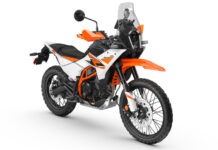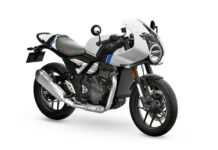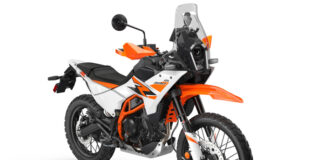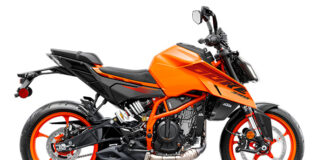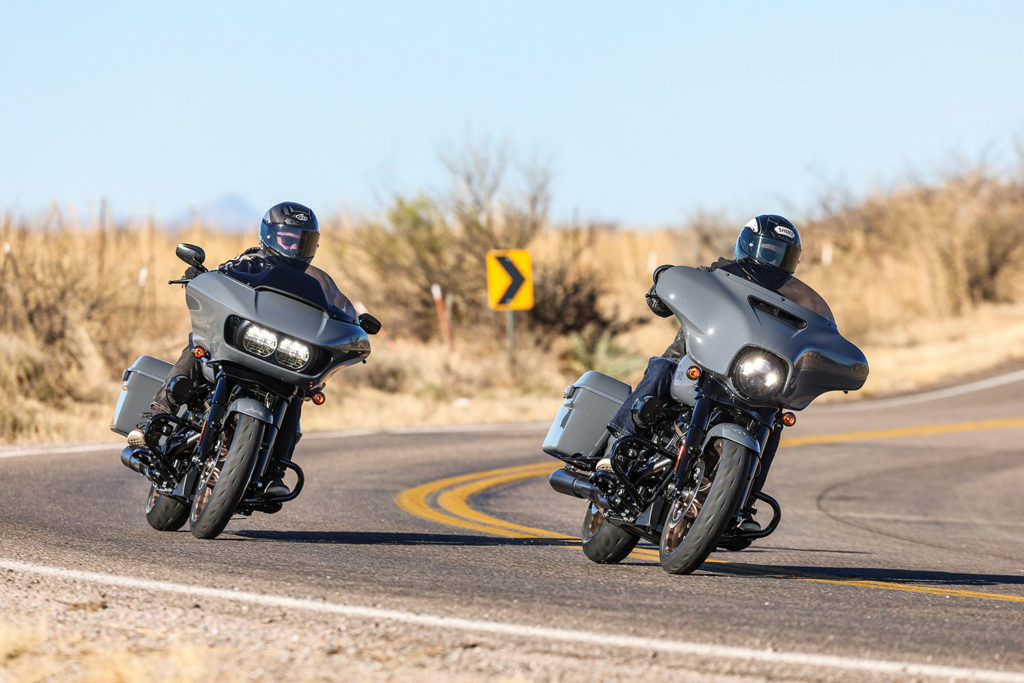
V-Twin baggers are regularly at the top of streetbike sales charts, and a perennial leader has been the Harley-Davidson Street Glide, with H-D’s Road Glide running close behind. The Glides are revered for the effortless way they trot along American roads accompanied by the loping cadence of their narrow-angle V-Twin motors.
Check out Rider‘s 2022 Motorcycle Buyers Guide
However, there are many Glide owners who put a greater emphasis on performance than on touring ability. The performance-bagger market continues to gain momentum, a trend Harley says is “a new breed of speed.” The incredibly popular King Of The Baggers (KOTB) roadracing series has added more fuel to the performance fire.
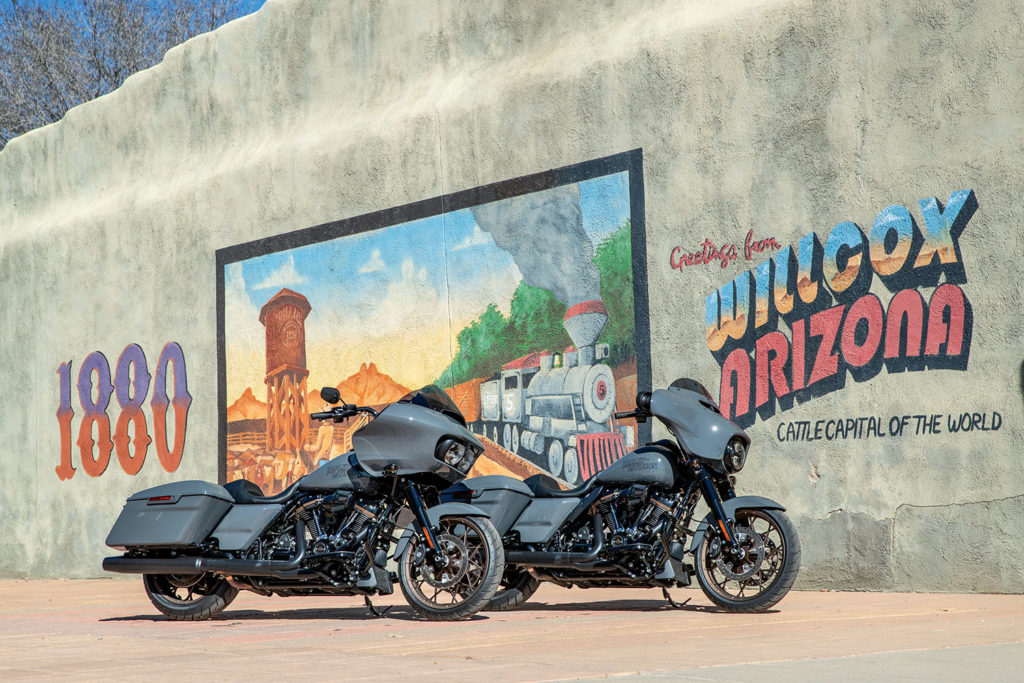
To meet this market demand and to capitalize on its KOTB championship title, H-D proffers the new Glide ST brothers, available in Street and Road versions. Touring bikes for a new breed of riders, says the MoCo.
OUT COME THE BIG GUNS
If you’re gonna build a hot-rod bagger, there’s no better place to start than the engine, and so Harley plugs in the biggest gun in its arsenal. The Road and Street Glide STs are fitted with H-D’s biggest production motor, the 117ci Milwaukee-Eight, an upgrade over the 114ci V-Twin found in lesser models. This is the 117’s first appearance in a non-CVO Harley, firing out a tire-shredding 127 lb-ft of torque from its 1,923cc displacement. Harley says the 117 is a value proposition for riders who might otherwise invest in engine upgrades.
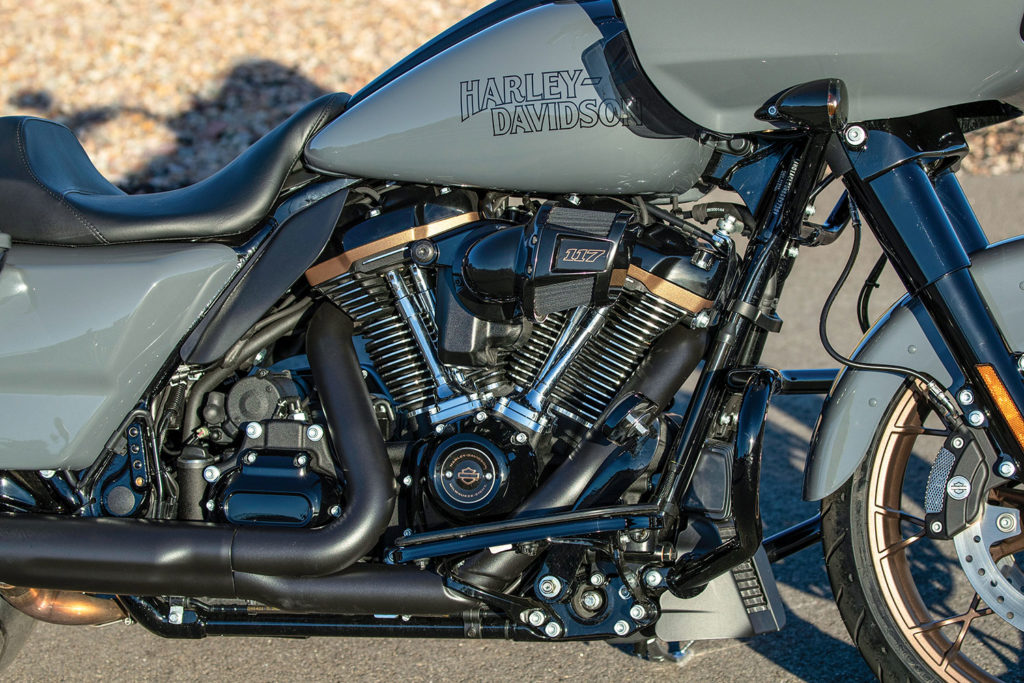
Black is the dominant theme, as brightwork is limited to the chrome pushrod tubes, tappet covers, and machined cylinder fins. Matte Dark Bronze finishes on the lower rocker box, timer cover medallion, and the medallion on the Heavy Breather intake provide subtle highlights.
SWITCHIN’ TO GLIDE
The FLHX Street Glide is perhaps the most ubiquitous motorcycle on American roads. Introduced in 2006 as an offshoot of the popular Electra Glide, they are both led by their iconic batwing fairings mounted to the handlebar.
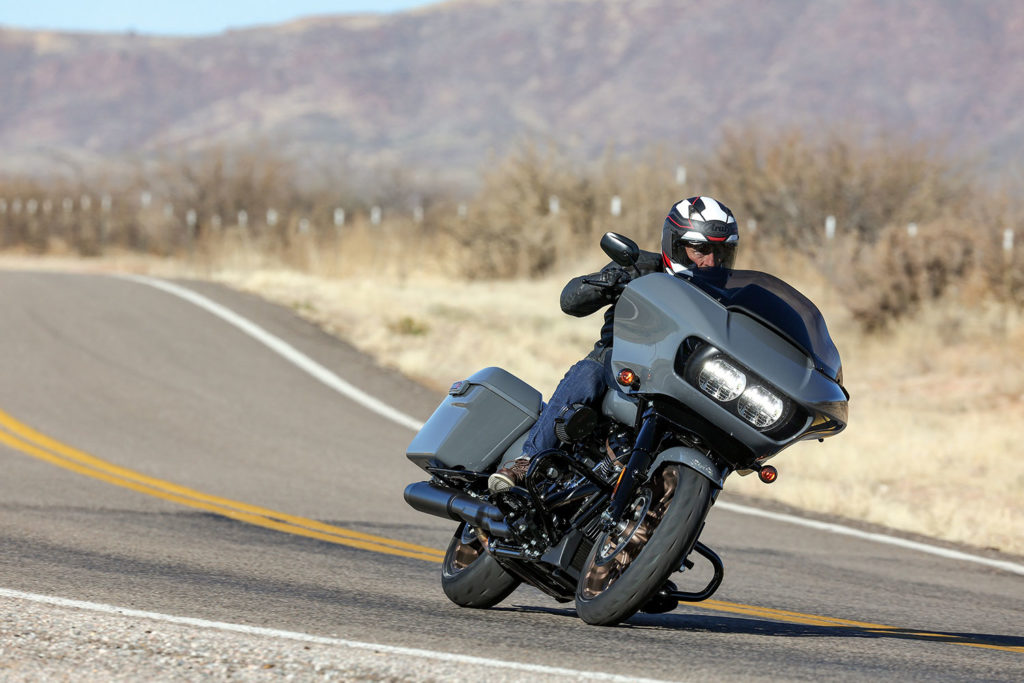
Harley’s FLTR Road Glide was introduced in 1998 as an evolution of the FLT Tour Glide from the 1980s, both using distinctive shark-nosed fairings mounted to the chassis. Other than their fairings, the Road Glide is essentially the same bike as the Street Glide.
The Glide STs are part of Harley’s Grand American Touring lineup, so they naturally include luxury items like a Boom! Box GTS infotainment system with a color touchscreen and navigation, fairing-mounted speakers, a hidden radio antenna, cruise control, and Daymaker LED headlamps. Both Glide STs are equipped with linked Brembo brakes with ABS.
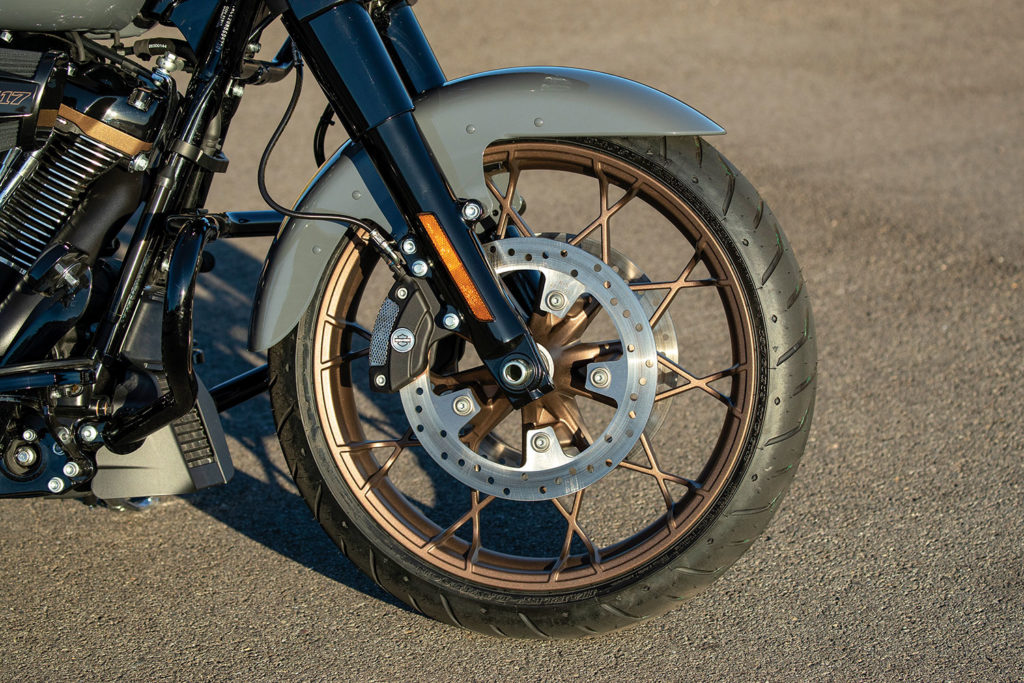
For a sportier, lighter appearance, the STs receive a low-profile tank console and a trimmed front fender, plus a new solo seat that exposes the rear fender but leaves passengers at home. Standard-length saddlebags replace the extended bags used on Special models for additional cornering clearance and to expand aftermarket exhaust options.
Prodigy cast-aluminum wheels feature a Matte Dark Bronze finish to match the bronze engine highlights, while nearly everything else aside from the tins (front end, controls, powertrain, and exhaust) feature blacked-out finishes. For a dash of retro, the Harley-Davidson logo on the 6-gallon fuel tanks is modeled from Harley’s 1912 racebikes, and on black STs, it’s outlined in a gold color that matches the bikes’ bronze finishes.
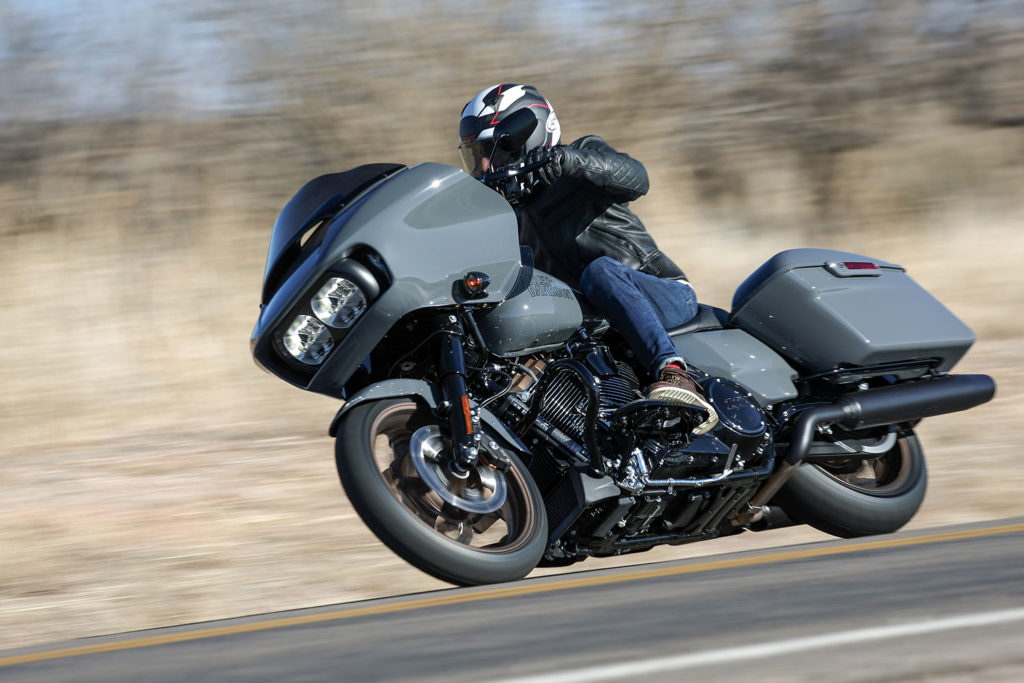
GEAR UP
Helmet: Arai Regent X
Jacket: Alpinestars Hoxton V2
Gloves: Alpinestars Celer V2
Pants: Alpinestars Copper V2
Boots: Harley-Davidson Hagerman
Both Glides retail for $29,999 in Vivid Black. The Gunship Gray versions are priced at $30,574. Supply shortages due to Covid have forced H-D to exact a $1,000 surcharge.
Optional on Grand American tourers is Harley’s Cornering Rider Safety Enhancements package, formerly called Reflex Defensive Rider System (RDRS). It employs a 6-axis IMU to manage cornering traction control with ride modes, cornering ABS with linked braking, drag-torque slip control, hill-hold control, and tire-pressure monitoring. It’s a $1,025 upcharge.
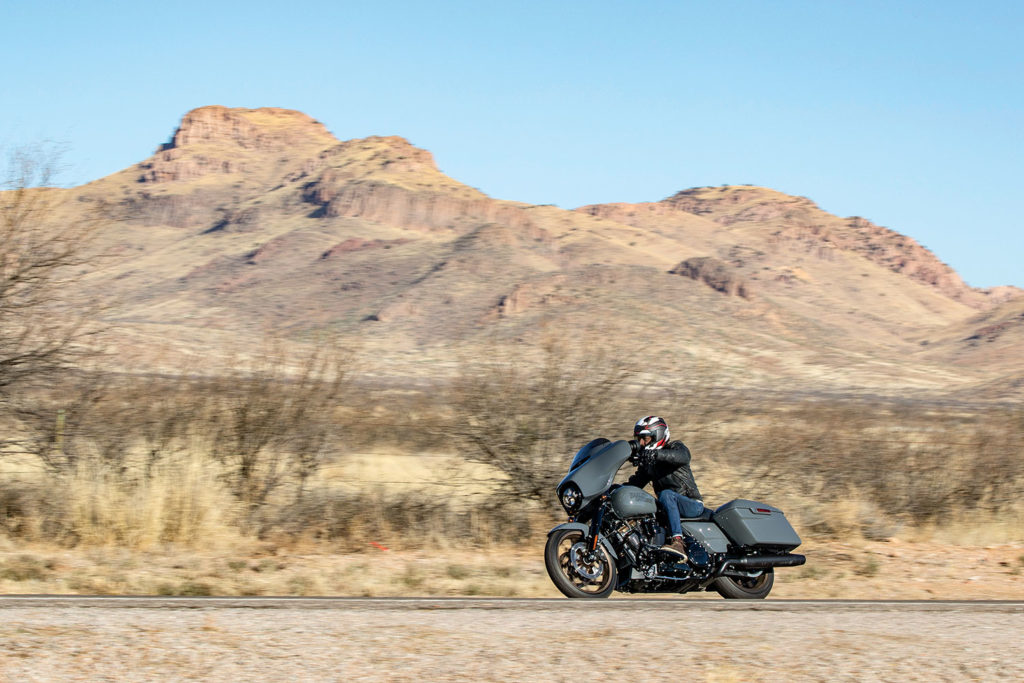
SWITCHIN’ TO RIDE
The Street Glide is the lighter ST, scaling in at 814 lbs in ready-to-ride form, and its less-expansive batwing fairing adds to the perception. The cockpit is roomy and accommodating, with a handlebar that rises up and sits at an angle. Four analog gauges reside just under the tinted low-profile windscreen, and they’re flanked by a pair of speakers and mirrors integrated at the fairing edges. The touchscreen TFT info/navigation panel sits just above the upper triple-clamp.
The larger fairing on the Road Glide adds visual heft to a rider’s perception, backed up by the bike’s 842-lb curb weight. Here, the vivid TFT touchscreen panel sits front and center just under the low-profile, darkly tinted windshield. The info screen is flanked by a fuel gauge and voltmeter, with a pair of speakers further outboard. A traditional analog speedometer and tachometer pairing reside just ahead of the handlebar mounts. Switchgear on both Glides is the familiar H-D array, including the dual turnsignal buttons.
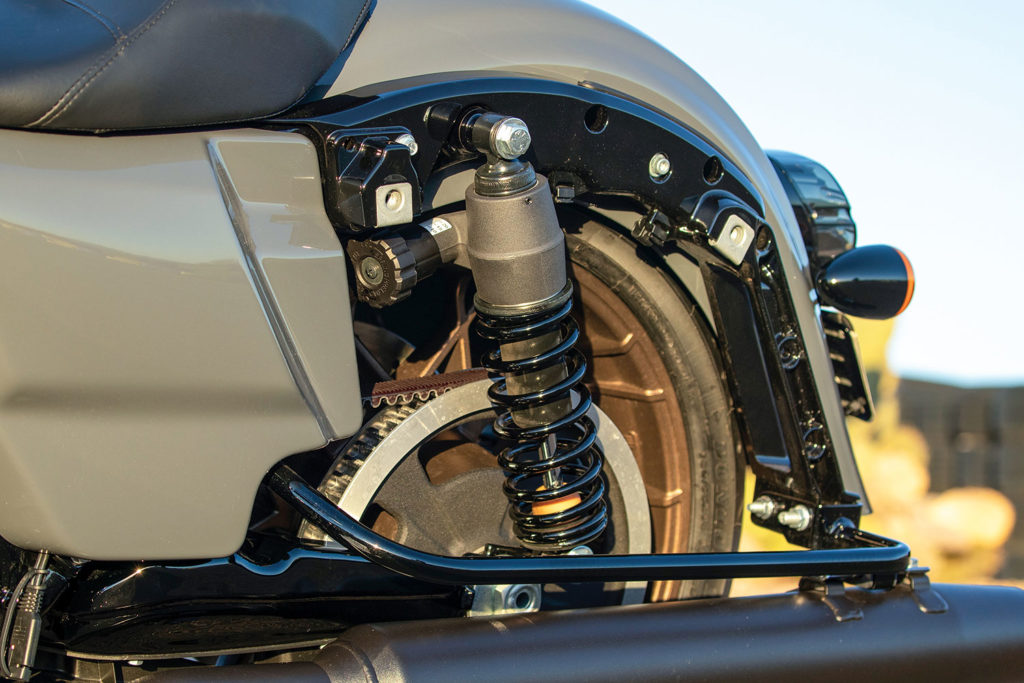
The 117 fires up with a rumble and the familiar potato-potato thumping from below. The clutch engagement point is easy to ascertain, and, helped by the engine’s immense low-end grunt, you’d need to be a fool to stall the Glides when pulling away from a stop.
Pushrod valve actuation and air cooling suggest a lack of modern technology, but Harley’s M-8 functions extraordinarily well. As its name implies, the V-Twin breathes through four valves per cylinder, and they never need adjusting thanks to H-D’s hydraulic overhead valves. Power from the V-Twin is omnipresent, delivering a satisfying oomph at nearly any engine speed, eventually running out of breath near its 5,500-rpm redline. Rubber engine mounts eliminate harsh vibration from reaching a rider, and there aren’t many other powertrains that roll down the open road as smoothly and effortlessly as this one.
“A pushrod air-cooled V-Twin is our secret sauce,” said Brad Richards, H-D’s VP of design, who rode with us at the launch. “There’s something special about how it goes down the road.” And he’s right.
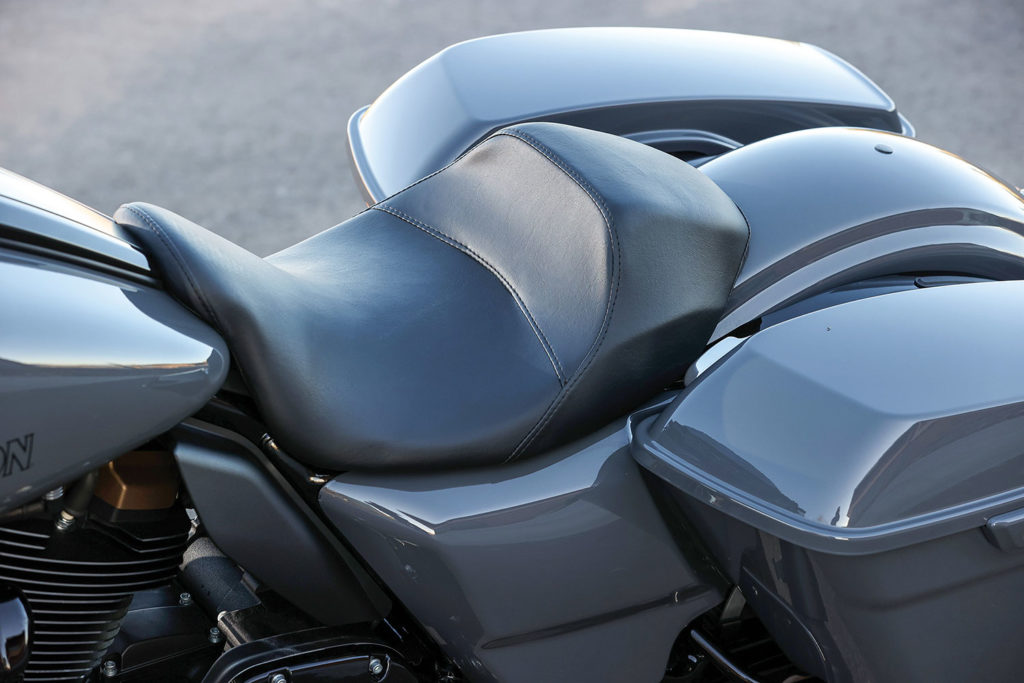
Suspension consists of a dual-bending-valve 49mm Showa fork paired with emulsion-technology rear shocks and single-knob hydraulic preload adjustment. Harley pursues low seat heights more fervently than any other manufacturer, but the STs buck that trend somewhat by fitting shocks from the Road King to deliver 3 inches of rear wheel travel, up from the Road Glide Special’s 2 inches. Seat height shimmies upward to a still-low 28 inches.
Both STs feel similar when bending into corners, despite the drastically different fairings, banking over easier than you might imagine for an 800-lb bagger. It’s a willing and stable platform while unwinding a twisty road, but let’s not confuse it with a sportbike. Floorboards begin to drag when leaned over to 32 degrees – enough to have fun, but nowhere near the 55-degree leans that KOTB champ Kyle Wyman can achieve on his Road Glide racebike.
Solid braking performance is provided by Brembo 4-piston calipers operating via braided lines and clamping on 11.8-inch (300mm) discs. The single rear brake has the same specs. The front tire is a 130/60-19 bias-ply, while a 180/55-18 resides out back.
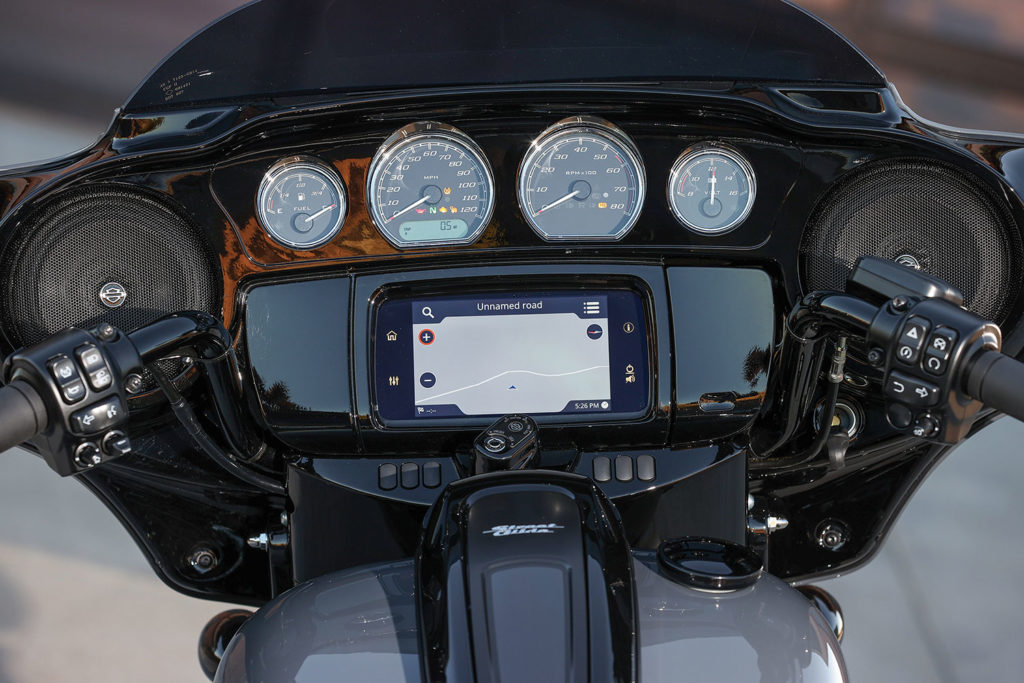
There wasn’t an opportunity to fully delve into the Boom! Box GTS infotainment system, but it seems to be well sorted and includes Apple CarPlay and Android Auto compatibility. Audio quality via the radio is closer to adequate than exceptional.
Ergonomics are very good, but not beyond reproach. The rear brake pedal is mounted rather high, and the Heavy Breather intake intrudes on knee space when raising a boot to apply rear braking. Also, shift action of the 6-speed gearbox is rather clunky. The seat feels supportive for an hour, but it’s not up to the cushy standards of Harley’s other touring models. And while we’re nitpicking, I’d like to see a larger gear-position indicator and adjustable levers on my $30k bagger.
WHICH GLIDE?
This has been a hotly debated topic among H-D aficionados, with no clear winner aside from subjective judgments on style. In windy conditions, I much preferred the greater stability of the Road Glide, as stubborn crosswinds on the Street Glide’s bar-mounted fairing applied marginal unwanted inputs to the steering. The Road Glide’s triple splitstream vented fairing also delivers smoother airflow around a rider.
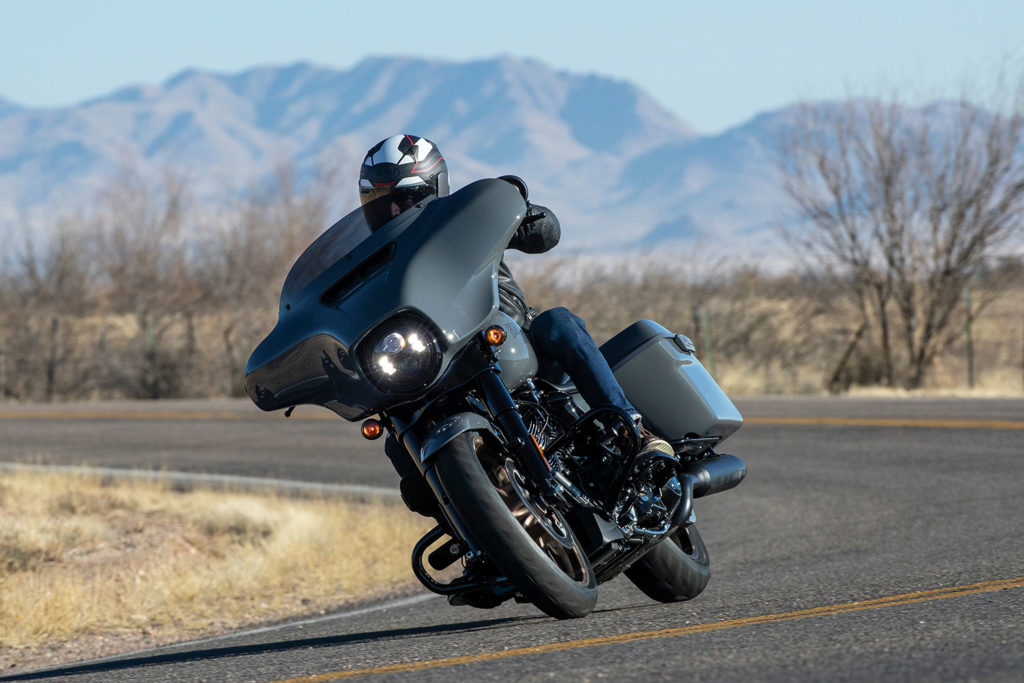
That said, the Street Glide is slightly lighter, and its fairing attached directly to the handlebar allows a rider to wriggle his/her way through dense traffic more adeptly. And for some, its batwing fairing is irresistible.
WRAP IT UP
It’s not a surprise to have enjoyed seat time on these new Glide STs. They’re basically the same bikes that we’ve grown to appreciate for their over-the-road prowess and surprising agility but are now blessed with more power and tasteful high-end finishes. Perhaps we shouldn’t be surprised when a $30,000 motorcycle delivers the goods. And the Road/Street Glide STs include a pair of hardshell saddlebags in which to carry those goods more than 220 miles between fill-ups.
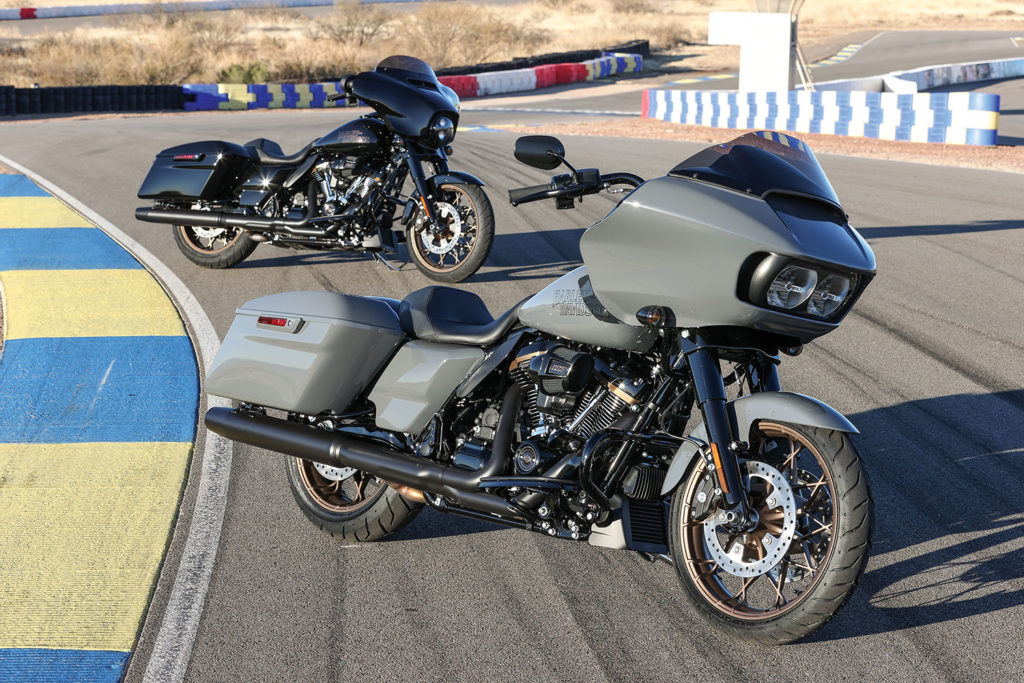
2022 Harley-Davidson Road Glide ST/Street Glide ST Specs
Base Price: $29,999 (Vivid Black)
Price as Tested: $31,599 (Gunship Gray, Cornering Rider Safety Enhancements)
Website: harley-davidson.com
Engine Type: Air-cooled, transverse 45-degree V-Twin, OHV w/ 4 valves per cyl.
Displacement: 1,923cc (117ci)
Bore x Stroke: 103.5 x 114.3mm
Horsepower: 106 hp @ 4,750 rpm (at the crank)
Torque: 127 lb-ft @ 3,750 rpm (at the crank)
Transmission: 6-speed, hydraulically actuated slip/assist wet clutch
Final Drive: Belt
Wheelbase: 64 in.
Rake/Trail: 26 degrees/6.7 in.
Seat Height: 28.1/28.0 in.
Wet Weight: 842/814 lbs.
Fuel Capacity: 6 gal.


